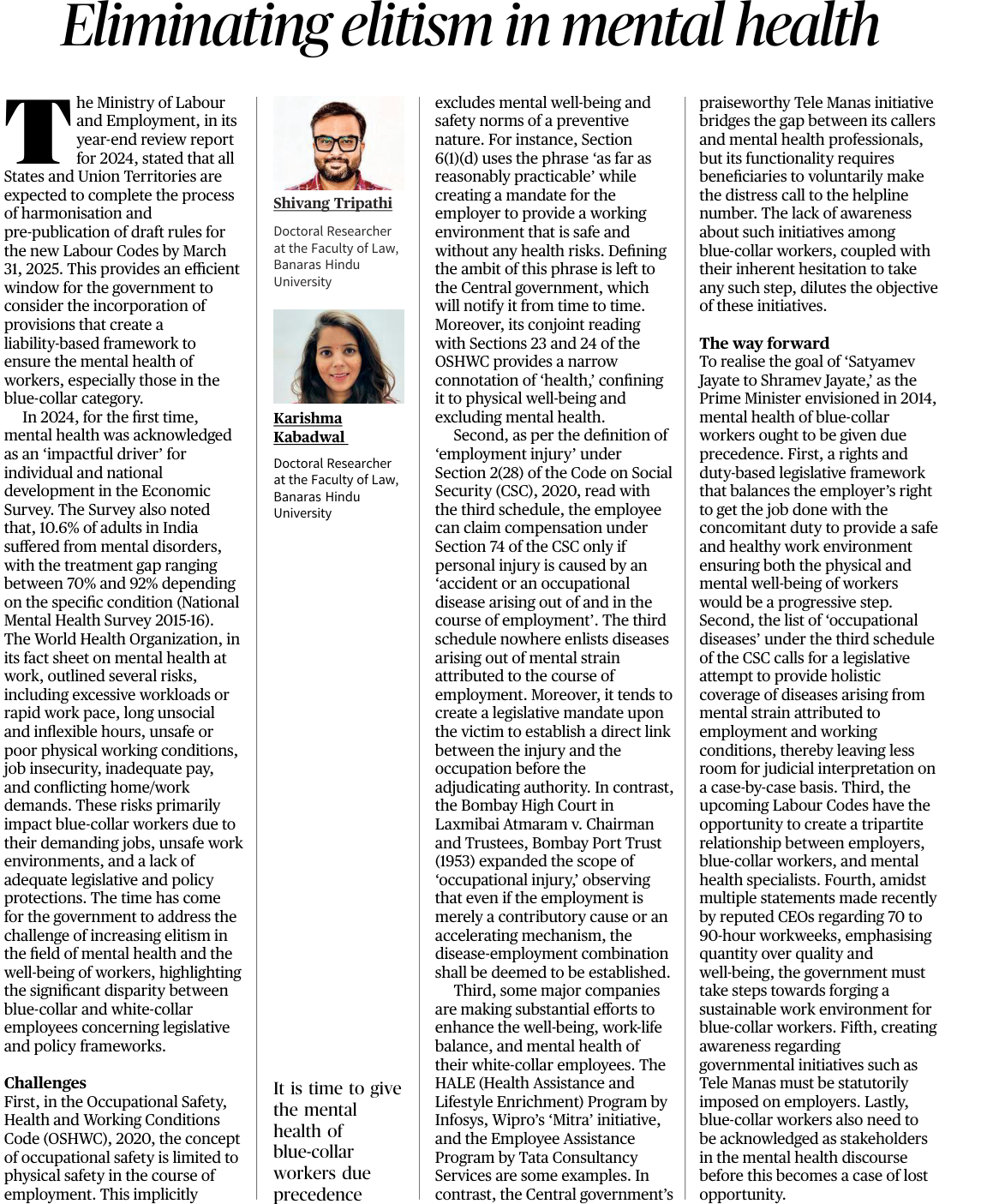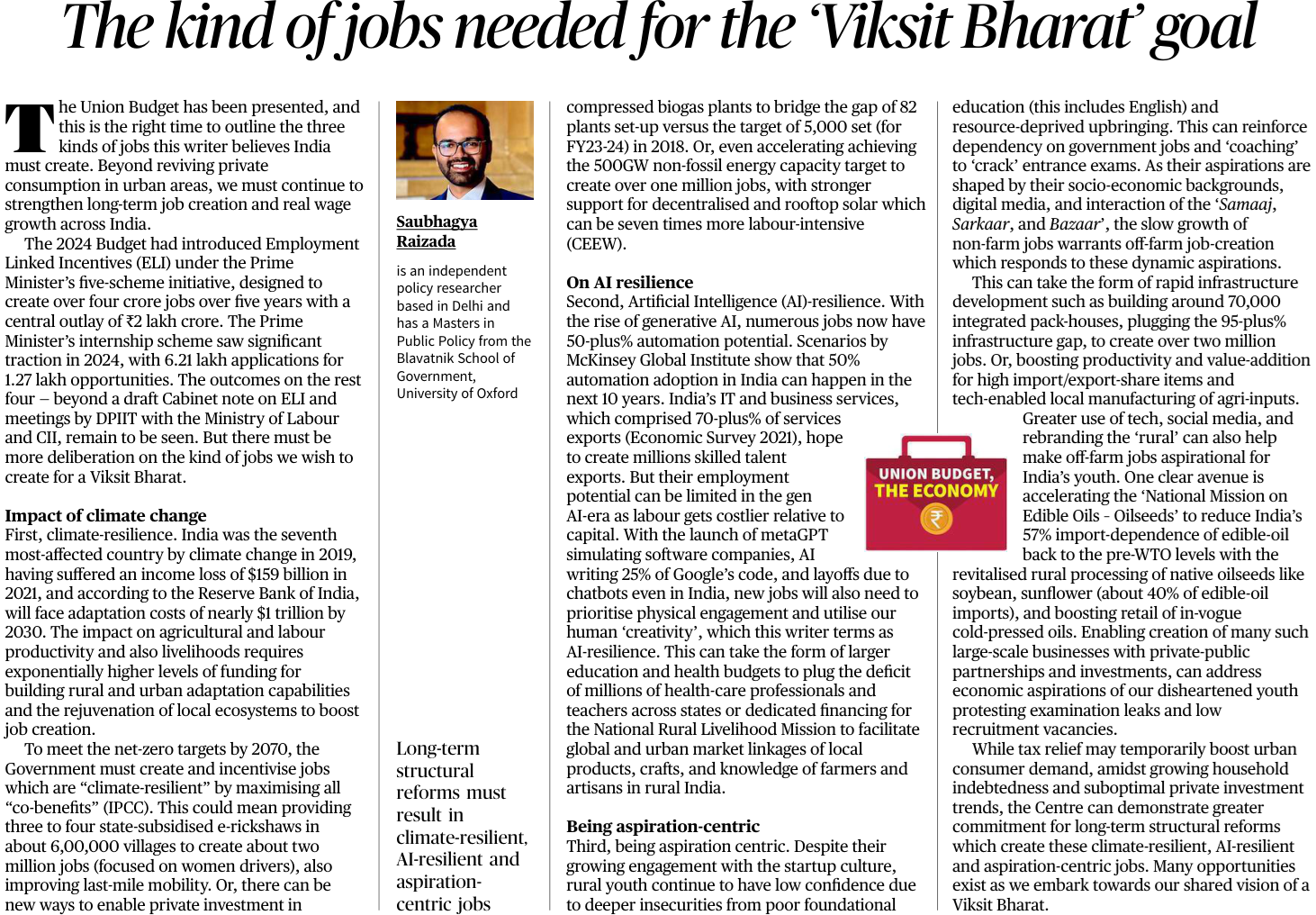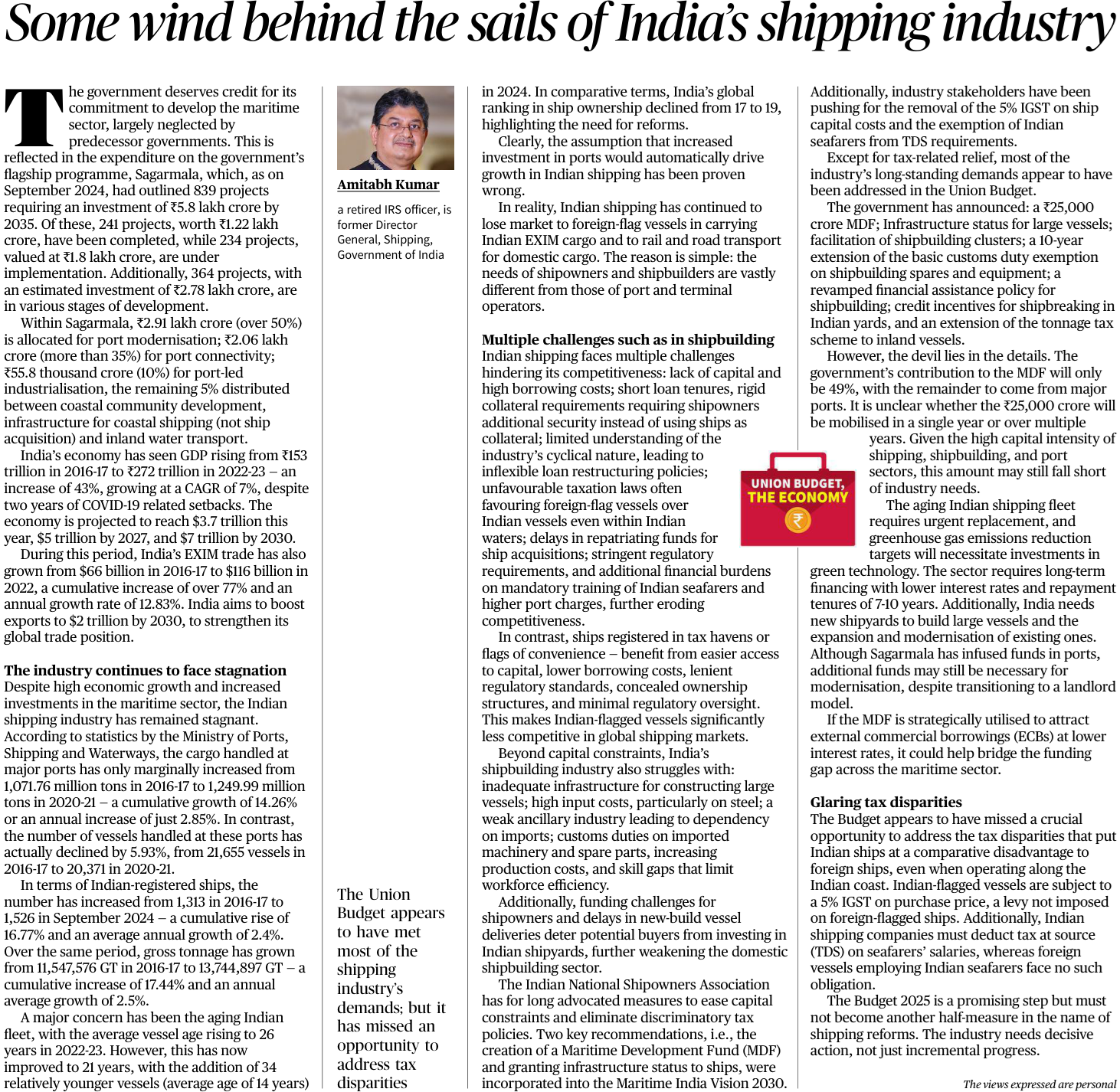1. Ensuring Mental Health Equity for Blue-Collar Workers
Introduction
Mental health at the workplace is a critical yet often neglected issue, particularly for blue-collar workers. The Ministry of Labour and Employment’s report for 2024 underscores the need to integrate mental health provisions into labor codes. The current framework primarily addresses physical safety, overlooking psychological well-being, thus exacerbating disparities between blue- and white-collar employees.
- The Significance of Mental Health in the Workplace
- Economic Survey 2022 highlighted mental health as an “impactful driver” for national productivity.
- WHO’s fact sheet identifies workplace stressors, including:
- Excessive workloads
- Poor work-life balance
- Job insecurity and underpaid labor
- Toxic work environments
- These factors disproportionately impact blue-collar workers, who lack adequate legislative protections.
- Challenges in Existing Frameworks
- Occupational Safety, Health, and Working Conditions Code (OSHWC), 2020:
- Limits occupational safety to physical risks.
- Excludes mental well-being and psychological stress from employer responsibility.
- Uses vague phrases such as “as far as reasonably practicable,” allowing inconsistent enforcement.
- Code on Social Security (CSC), 2020:
- Covers mental strain only if it results in a diagnosable occupational disease.
- Leaves most mental health claims to be determined case by case.
- Gaps in Corporate Mental Health Initiatives
- White-collar employees benefit from programs such as:
- Infosys’ HALE Initiative
- Tata’s Employee Assistance Program
- Government-led initiatives like Tele Manas exist but lack awareness among blue-collar workers.
- The Way Forward
- Legislative Reforms:
- Expand the definition of “occupational diseases” to include work-related mental health issues.
- Make employers responsible for workplace mental health programs.
- Policy Interventions:
- Set clear mental health safety norms in the Labour Codes.
- Promote tripartite engagement among employers, workers, and mental health experts.
- Corporate Role:
- Implement structured employee wellness programs for all workers, not just white-collar employees.
- Reduce excessive working hours, ensuring work-life balance.
Conclusion
Mental health equity in workplaces is essential for sustainable economic growth and social justice. Bridging the gap between blue- and white-collar workers requires legislative reforms, proactive corporate policies, and awareness initiatives. The upcoming Labour Codes offer a crucial opportunity to institutionalize mental health protections for all workers.
Bottom of FormMains Practice Question |
Q. “Workplace mental health is an economic and social imperative rather than a personal concern.” Discuss the challenges faced by blue-collar workers in ensuring mental well-being and suggest policy measures to address them. |
2. Reforming India’s Job Market for a ‘Viksit Bharat’
Introduction
The Union Budget 2024 highlights key employment initiatives such as the Employment Linked Incentives (ELI) and the Prime Minister’s internship scheme. However, to achieve the vision of Viksit Bharat, India must focus on long-term structural reforms that promote climate resilience, AI resilience, and aspiration-centric job creation.
- Impact of Climate Change on Employment
- Climate change has significantly affected India’s economy, causing losses of $159 billion in 2021 and requiring adaptation costs of nearly $1 trillion by 2030 (RBI estimates).
- There is a need to:
- Promote “climate-resilient” jobs through co-benefits investments.
- Scale up subsidized e-rickshaws and other sustainable transport models to create over 1 million jobs.
- Expand decentralized solar and biogas energy production, which is highly labor-intensive.
- AI Resilience and Human-Centric Jobs
- AI-driven automation could replace up to 50% of jobs in the next 10 years (McKinsey Global Institute).
- India’s IT and service sectors, contributing 70% of exports, need AI-resilient job strategies such as:
- Strengthening higher education and vocational training.
- Increasing local healthcare and teaching jobs to fill gaps.
- Encouraging creative industries and social engagement jobs that AI cannot replace.
- Addressing Aspirational Job Creation
- Despite urban migration, rural job creation remains crucial due to aspirations of a digitally aware youth.
- Solutions include:
- Strengthening rural infrastructure and off-farm jobs (e.g., food processing, local manufacturing).
- Rebranding rural employment through social media campaigns.
- Encouraging private-public partnerships in initiatives like the National Mission on Edible Oils to reduce edible oil import dependency.
Conclusion
The Union Budget must go beyond temporary measures like tax reliefs and demonstrate long-term structural reforms that create climate-resilient, AI-resilient, and aspiration-driven jobs. This will align with India’s shared vision of becoming a Viksit Bharat by 2047.
Mains Practice Question |
Q. “Despite rapid urbanization, rural job creation remains a key factor for India’s inclusive growth. Discuss the role of climate resilience, AI adaptation, and aspiration-driven jobs in shaping India’s future employment landscape.” |
3. Revitalizing India’s Shipping Industry: Challenges and Opportunities
Introduction
The Indian government has made significant investments in the maritime sector under programs like Sagarmala, with 839 projects worth ₹5.8 lakh crore planned by 2035. However, despite these efforts, India’s shipping sector continues to struggle due to lack of capital, high borrowing costs, taxation issues, and foreign competition. Addressing these challenges is crucial for boosting India’s global trade and achieving maritime self-reliance.
- Growth and Investments in the Shipping Industry
- Sagarmala Initiative:
- 241 projects worth ₹1.22 lakh crore completed.
- 324 projects worth ₹1.8 lakh crore under implementation.
- Focus on port modernization, industrialization, and connectivity.
- India’s Economic and Trade Growth:
- GDP increased from $1.53 trillion (2016-17) to $2.72 trillion (2022-23).
- EXIM trade grew from $65 billion (2016-17) to $116 billion (2022).
- Goal to reach $2 trillion in exports by 2030.
- Challenges in the Shipping Industry
- Capital and Financial Barriers:
- High borrowing costs and rigid collateral requirements.
- Short loan tenures leading to cyclic instability.
- Taxation laws favoring foreign-flagged vessels.
- Regulatory and Operational Challenges:
- Stringent maritime laws increase operational costs.
- High port charges and mandatory training costs for Indian seafarers.
- Foreign competition benefits from lower taxation and relaxed regulations.
- Global Competitiveness Issue:
- India’s global ranking in ship ownership fell from 17th to 19th.
- Foreign-flagged vessels dominate India’s EXIM trade.
- Government Measures and Policy Recommendations
- Union Budget 2024 Provisions:
- ₹25,000 crore Maritime Development Fund (MDF)
- 10-year tax exemption for ship leasing and acquisition.
- Removal of 5% IGST on ship capital costs (pending).
- Long-Term Solutions for Industry Growth:
- Need for easier credit access and long-term financing for shipbuilding.
- Policy changes to encourage domestic fleet expansion.
- Infrastructure improvements and modernized taxation policies.
Conclusion
Despite significant investments, India’s shipping industry requires better financial support, reduced taxation burdens, and strategic policy reforms to compete globally. Strengthening domestic shipping capacity is crucial for reducing dependency on foreign-flagged vessels and achieving India’s trade aspirations by 2030.
Mains Practice Question |
Q. “India’s shipping industry faces multiple challenges despite government investments. Discuss the key issues and suggest reforms to enhance India’s maritime competitiveness.” |




